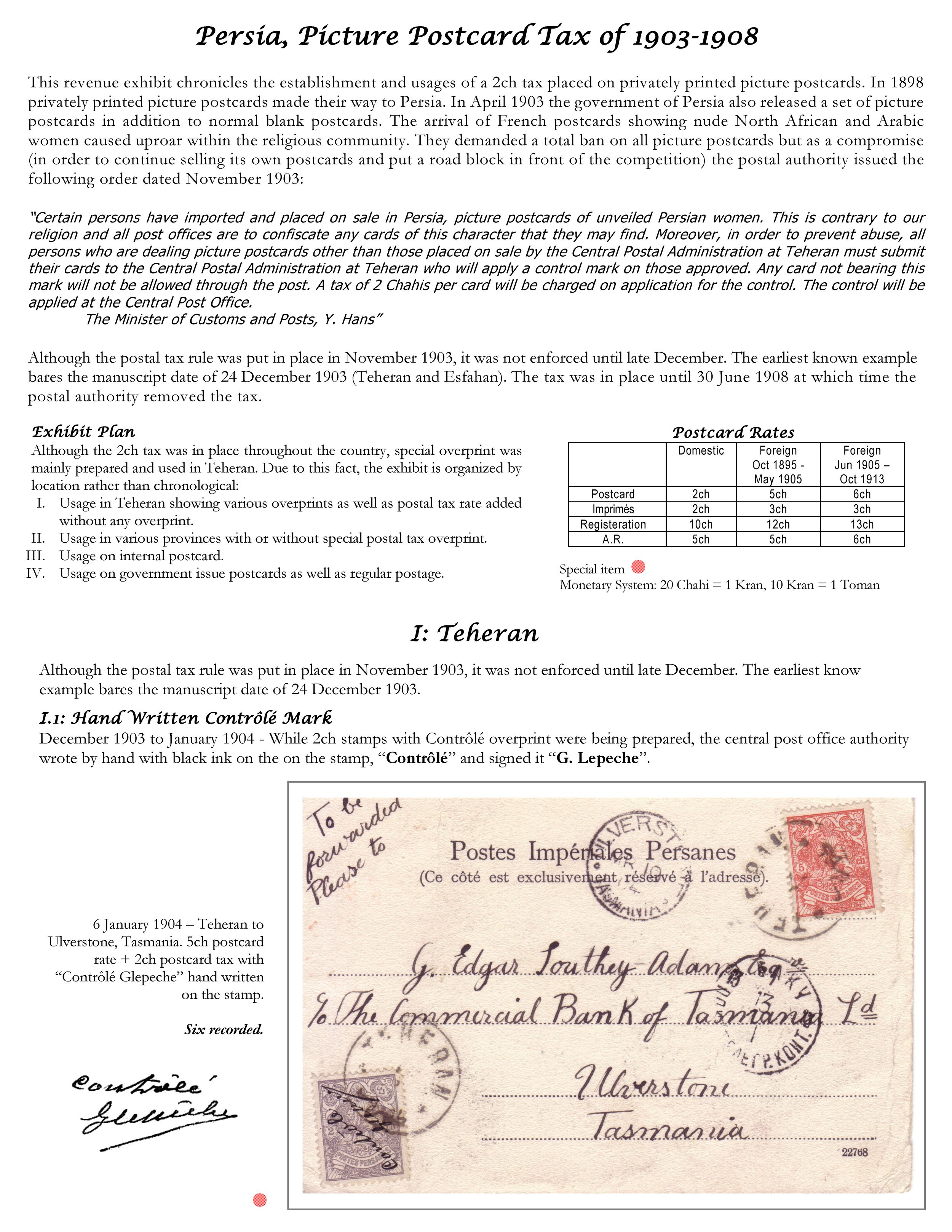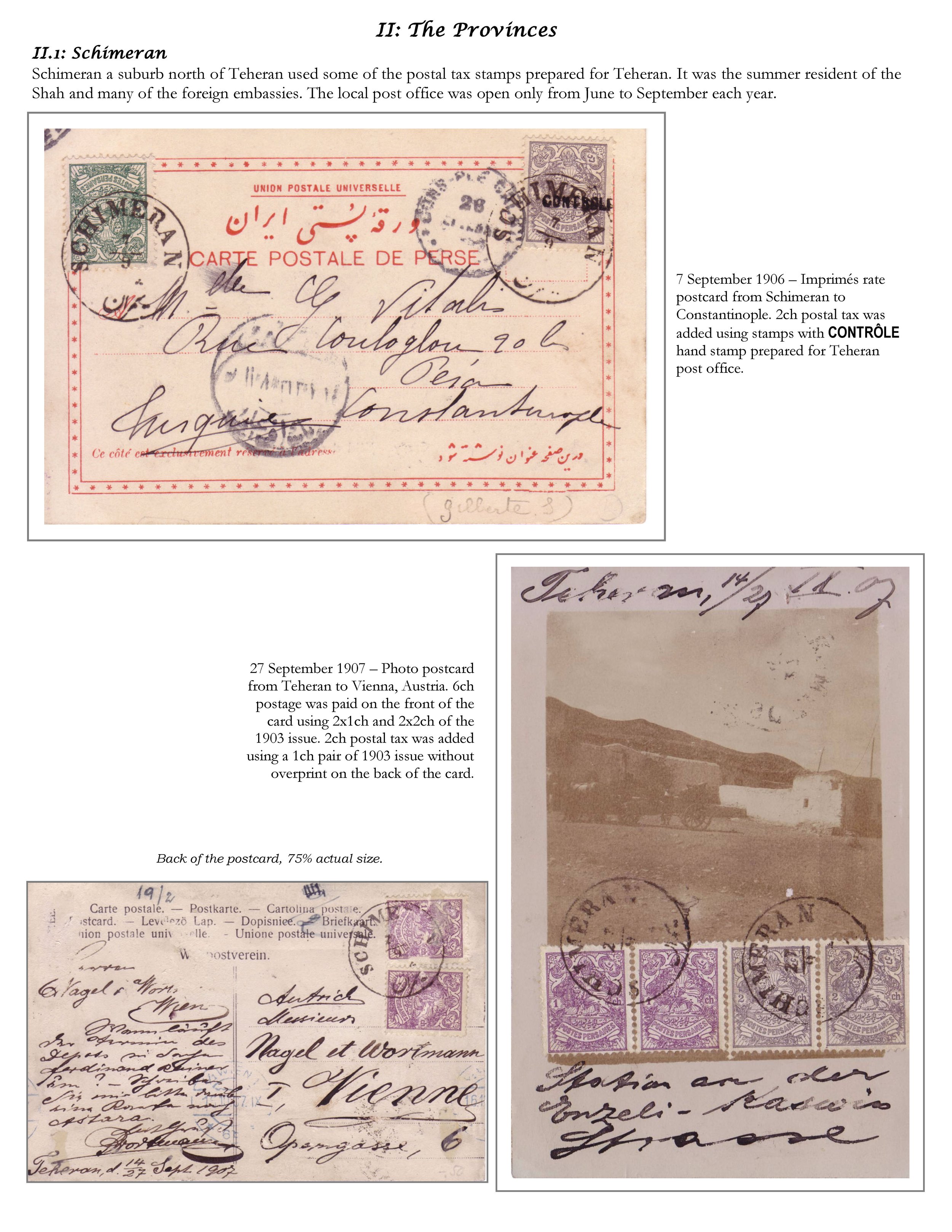Picture Postcard Tax of 1903-1908
Behruz Nassre بهروز نصراصفهانی
This revenue exhibit chronicles the establishment and usage of a 2ch tax placed on privately printed picture postcards. In 1898, privately printed picture postcards made their way to Persia. In April 1903, the government of Persia also released a set of picture postcards and normal blank postcards. The arrival of French postcards showing nude North African and Arabic women caused an uproar within the religious community. They demanded a total ban on all picture postcards. Still, as a compromise (to continue selling its own postcards and put a roadblock in front of the competition) the postal authority issued the following order dated November 1903:
Certain persons have imported and placed on sale in Persia, picture postcards of unveiled Persian women. This is contrary to our religion and all post offices are to confiscate any cards of this character that they may find. Moreover, in order to prevent abuse, all persons who are dealing picture postcards other than those placed on sale by the Central Postal Administration at Teheran must submit their cards to the Central Postal Administration at Teheran who will apply a control mark on those approved. Any card not bearing this mark will not be allowed through the post. A tax of 2 Chahis per card will be charged on application for the control. The control will be applied at the Central Post Office.
The Minister of Customs and Posts, Y. Hans
Although the postal tax rule was implemented in November 1903, it was not enforced until late December. The earliest known example bears the manuscript date of 24 December 1903 (Teheran and Esfahan). The tax was in place until 30 June 1908, at which time the postal authority removed the tax.
















